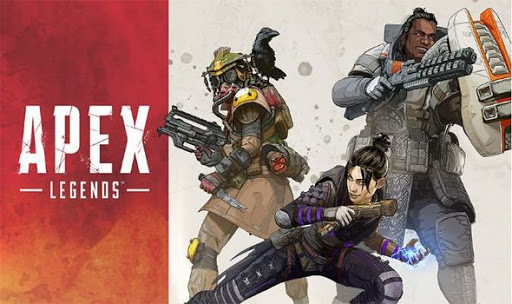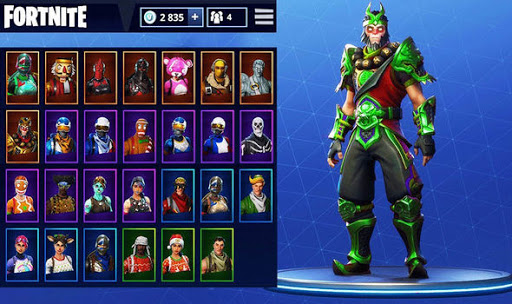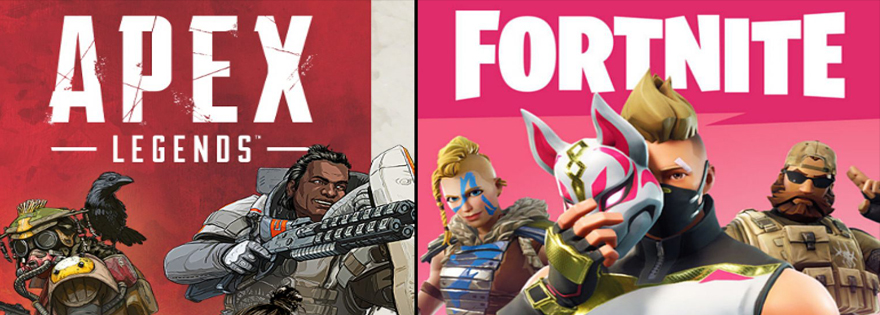It’s been a rough six months for video game publishers. Shares of Activision Blizzard (ATVI), Take-Two Interactive (TTWO), and Electronic Arts (EA) have each fallen more than 25%. However, after last Wednesday’s earnings misses and weak guidance that sent the big three of gaming down further, EA’s stock surged more than 16% on Friday, adding about $4B in market cap, and is up 27% since reporting earnings last Tuesday. The catalyst of the move was the launch of a new free to play battle royale game called Apex Legends.

As a refresher, battle royale games like Apex and Fortnite are where between 60-100 players are dropped on an island to battle until one player or team remains, Hunger Games style. Epic Games’ Fortnite has taken the world, not just the video game world, by storm, and made over $2.5 billion last year. Since Fortnite’s developer, Epic Games, is a privately held company, Wall Street hasn’t had much of an avenue to play the battle royale trend until the launch of Apex.

Analysts are calling Apex Legends EA’s “hottest new game in years” and while we certainly understand the hype behind the Fortnite competitor, we think the economic opportunity may be overestimated by Wall Street.
The Best Battle Royale Game Outside Fortnite
Don’t get us wrong, we think Apex Legends is better than PlayerUnknown’s Battlegrounds, Call of Duty’s Blackout, and the long list of takes on the battle royale mode. Apex is free-to-play like Fortnite, gameplay mechanics are polished, and new strategy tactics and tools at the players’ disposal present fun new challenges to solve.
Initial reviews from gamers were overwhelmingly positive, and Twitch viewership for Apex has been more than double Fortnite’s in the last few days, though it should be noted EA has been paying streamers like Ninja to play Apex recently. Also, while Twitch numbers are leading the pack, Apex ranks #2 on Xbox time played. Fortnite is still #1.
EA still has a rare opportunity to take aspects of what made Fortnite great and implement them into their own free-to-play battle royale world. EA now has a platform with momentum to launch new experiences like this month’s Fortnite x Marshmello concert or host esports tournaments. Apex will also be pushing cosmetic microtransactions as every game does now, but Fortnite still does best.
That is why EA’s stock is up, but there are reasons to be only cautiously optimistic, as it appears Wall Street has already priced in tremendous upside in Apex for EA.
Staying & Pricing Power Uncertainty
The game’s staying power, one of the defining issues of the gaming industry, remains to be seen. As new information on Apex comes out on player count and monetization trends, EA’s stock could swing big, up or down.
The free-to-play AAA title model is the perfect example of a competitive market fighting for a limited number of customers and subsequently driving prices down to zero with the hopes of recouping expensive game budgets in other ways. This worked for Fortnite, the first-mover in this case, but as more publishers make their games free-to-play, it will be easier to pull players away from beloved titles. For the last 10+ years, AAA console and PC games have cost consumers $60 which led to gamers sticking with the titles they knew best in order to avoid wasting $60 on a bad game.
There will soon be more free-to-play games that will spread gamers’ time across more and more titles. This doesn’t bode well for Apex and other established game franchises like Call of Duty and Battlefield.
Monetization Challenge
Fortnite makes billions selling players skins and emotes. While Fortnite wasn’t the first game to bring microtransactions into the fold, it clearly found a recipe for success with the daily store. However, just because a game offers additional content through microtransactions doesn’t mean players will be buying them.
The nature and format of a game can place a cap of the upside of cosmetic microtransactions. What makes Fortnite skins so popular is the art-style and the third-person format of the game. The latter point is particularly important because in a first-person game, you never get to see the skin and enjoy it yourself. (Skins in Fortnite cost up to $20 each.)

Apex, on the other hand, will face a similar challenge as Call of Duty’s battle royale mode, Blackout, faced: first-person point of views and more realistically styled graphics aren’t a good combination for players to spend money on cosmetics.
Consider Facebook vs. Twitter ad revenue. Facebook’s approach of having users provide their real name and information makes it much easier to target ads than Twitter’s approach of people hiding behind usernames.
Apex currently offers weapon skins and a few basic character variations that don’t feel nearly as critical to the game as Fortnite skins do. Here are a few comparisons of the first-person view of Apex compared to the third-person perspective of Fortnite:
Apex Legends: First Person

Fortnite: Third Person

Wall Street should be forecasting Apex microtransaction revenue based on Call of Duty Blackout’s average revenue per user (ARPU) and not Fortnite’s.
It is important to note that we are only a week into Apex Legend’s lifecycle and there will likely be new monetization avenues for them to explore like a Battle Pass, the paid and tiered system to unlock exclusive rewards that Fortnite took mainstream. EA’s Battle Pass will be coming to Apex Legends in early March.
Less Kid Friendly
Another thing that made Fortnite great was its ability to appeal to broad age demographics, like a Pixar film. Apex, on the other hand, is a more challenging game (from personal experience) and its mechanics don’t make it a great candidate for launching on mobile devices as Fortnite so successfully did.
Fortnite can have a stigma of being for children, even though that is far from reality. Apex is building its reputation as the serious but fun battle royale for adults. We think Fortnite’s increased accessibility is an advantage.
Battle Royale Burnout?
One final cause for concern is the assumption that battle royale is here to stay at its current popularity level. After years of the same format of shooter-genre titles, battle royale was a breath of fresh air. Battle royale modes will likely be included in many games for the foreseeable future, but we predict time spend on battle royale is more likely to level out or fall from current peak levels.
Apex did two things well that have led to its initial explosion is players despite seemingly every shooter adding a battle royale mode. It was the first battle royale game from a major developer that was free since Fortnite. Apex also made quality gameplay improvements, introducing classes for characters. However, we wonder how long players will enjoy spending 95% of every match searching for loot in preparation for what is often a 2-minute lost fight where elite players dominate more than ever.
Conclusion
We think Apex Legends is a great addition to the battle royale market. Yesterday, EA announced Apex reached 25 million downloads in one week, a milestone that Fortnite took almost three months to reach, which added another leg to the stock move. While the comparison isn’t apples to apples, the surge in Apex popularity shows EA now has the opportunity to compete with Fortnite after Activision and Take-Two failed to damage Fortnite’s maxed out defense shield.
Despite this opportunity, we are cautious that Apex will end up being worth more to EA than the $5 billion+ increase in market cap that it has already created, (Epic was recently valued at $15 billion), even it if is a huge success.
Disclaimer: We actively write about the themes in which we invest or may invest: virtual reality, augmented reality, artificial intelligence, and robotics. From time to time, we may write about companies that are in our portfolio. As managers of the portfolio, we may earn carried interest, management fees or other compensation from such portfolio. Content on this site including opinions on specific themes in technology, market estimates, and estimates and commentary regarding publicly traded or private companies is not intended for use in making any investment decisions and provided solely for informational purposes. We hold no obligation to update any of our projections and the content on this site should not be relied upon. We express no warranties about any estimates or opinions we make.
